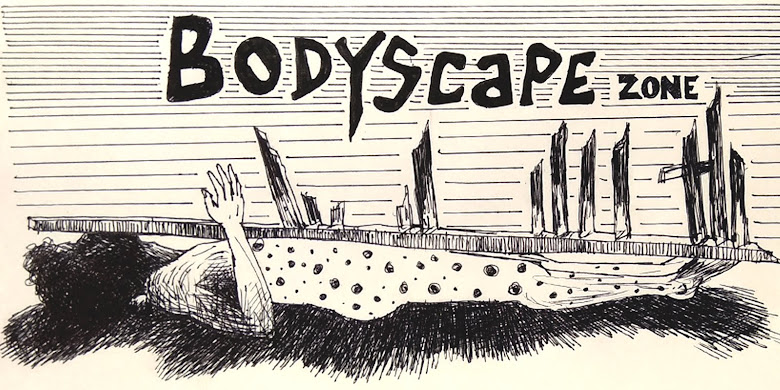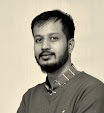Radical Bodies: Slipping into beyond is a
Performance Art project cum workshop. It was facilitated by Dagmar I.
Glausnitzer-Smith, Germany, hosted by School of Visual Arts, World University
of Design, Sonipat, Delhi NCR from 31st Sept 2019 to 2nd Oct 2019.
This
unique program was curated and developed by Anupam Saikia, a prolific
painter, with years of experience in performance art also he is a faculty at World University of Design. The School of Visual Arts, WUD always looking for
the new methodologies, in teaching that is aimed at inspiring young minds to
experience contemporary nature embodied Art as a tool with their personal
experiences to know self, body, identities in complex context by exploring
Performance Art.
 |
|

This project was open
for the learner, professional in Visual Arts who believe in Performance Art has
possibilities to open a window to know the self, also understanding and enhance
the medium in the contemporary Indian context. The workshop was beginning with
Performance Introduction, exercise, tutorial, planning, and briefing, etc and follow
up by movement, action understanding body, and materials with exploration.
Indeed, it was focused on Discussion session on problem and possibilities of
Performance Art. Where the action flows in context, radically, identically. How Curation happens in Performance art. Its pedagogical aspects and
implications. There was a collaborative exercise called “Understanding Materials
juxtaposed with body and space” leading by Anupam Saikia. Finally, it aims to
appreciate collectively solve the problems, and questions arise from the medium
through collaborative engagements rather than individual approaches.
Concept of the Workshop:
a
transmaterial connection between physical and mental presence in
time and space. Performance Art in a practical and observational context. The
body is the medium through which the creative flow enters the world. It could
be that the artist is present or is absent. A transmaterial relationship
between body and mind means that an active process is based on the idea of
matter, which reaches beyond a physical presence. The body can be understood as
the anatomical substance, as material, which initiates an action often a
reaction. The objective is the practice of creating relationships by connecting the body, object, and space. The movement of the body in space is transitional
however the action creates an image, which remains an impression in anyone’s
memory.
The
workshop implements practical exercises, observations, group discussions, formative
feedback, and a final performance art series day which may be open to all. Participants
of the workshop will explore the means of a live ‘image’ in space and its compositional
aspects and delivery. A composition is being created with the understanding of
space, time, texture, contrast, fragmentation, layers, color, and the human
body. A composition may be in question and therefore non-directive and intentional
aspects are emphasized in the presence of the body as an object. The discussion will
lead to an understanding of the ‘foreground’ of an image in space. Through
observation of known habits and the analysis of conventional behavior patterns,
predictable actions, and re-actions can be placed into the background or they
can be displaced. An understanding of ‘Self’ is experienced with an intuitive approach,
serious play, and spontaneity.
The workshop takes a practical and critical stance, which will animate the creative
process. It is sensitive towards ideas, details, and signals, which implement an
unfamiliar way of seeing. Through group conversations, individual ideas are
being reflected. The question of where is the ‘art’, ‘the work’ remains at the
core of the workshop.
The concept developed by Dagmar I. Glausnitzer-Smith.
The participants were Visual
Arts students from the School of Visual arts, WUD, Shanti Niketan, College of Art
Delhi, Ambedkar University, Shiv Nadar University, Jamia Milia Ishlamia along with some professional performance
Artist. This project is bringing challenges to Dagmar, the workshop facilitator, and professional working with the students who never encounter with the
performance art. Likewise, it was an opportunity for the students to work with professionals on the same platform.
Dagmar, Started with the
briefing, the introduction of Performance Art. The discourse came into the platform
that things can’t be “Just” like Artists are not doing just, it’s a conscious decision
by the artist.
 |
| Smaudra talks about Performance Documantation |
On the first day, Samudra Kajal Saikia talks about the “Problem and possibilities of
documentation in Performance art” where he shares different possibilities from
his experience. He talked about the documentation happens in a different form, in
times documents travel in many ways. Also, he focused on “Live” and in relation
to documentation, how "LIVE" is release, recreated in the form of documentation
that passes through to the viewer.
The second day, Guillaume Dufour Morin, Canada joined the workshop, talks about his practice, public and he collectively explores the public spaces near WUD with the participants.
 |
| Public performance by Guillaume Dufour Morin |
Dagmar
wrote on this workshop:
Through
a range of detailed and professional-led initiations and processes Anupam
Saikia organized this workshop, I believe for the students at WUD and
furthermore to extend the experience of Performance Art and its productive
workshop atmosphere to regional professors and international Artists. This very
special and conscious structure of involving a wide range of artists from different
backgrounds allowed an expansion to be explored beyond the institutional
safety-net. Professional practice in the world and a cultural society demands
an engagement, which often is being underestimated. The workshop provided
encouragement and the practice of Performance led to a reflective position of
student-professional-art-institutional relations. Especially in the methodology
of teaching Performance Art in previous workshops within and beyond the
University facilities opened existential aspects of self-assessment,
confidence, professional practice with formal self-management approaches apart
from deepening the focus of self-exploration and idea process and it's necessary
evaluation. The workshop furthermore informed the awareness level of differentiating
of public places and the laboratory safety-zone of teaching relationships.
The
study of the artists’ position within the field-work of Performance Art is
immediately exposing the body, its movements, object-relations and foremost the
question of time and space. This is introduced via a continuous and the chronological structure of self-experience and practical implementation of mind
and body, synchronically working on a layer of reality which often can
underestimated in strong task-oriented isolated work practice.
Some
of the key elements within the workshop development are:
- the free and courageous confrontation with a public or audience
situation whilst maintaining authentic intentions for the sake of the artwork.
- the engagement with experimental and
practical sites, and site-specific situations unique to Nicosia and create
geo-philosophical, relations towards ideas of migration, homeland, landscapes, and border cultures
- the articulation of intentions,
self-value status and meaning of the work
- the discovery of intuitive skills
coupled with intellectual negotiations to understand and differentiate
presentation and representation
- The
foreignness and cultural differences
also apparent during these workshop days very quickly dissolved into a trusting
and welcoming atmosphere, which allowed the intellectual jump into the
possibility of operating within the linguistic parameters. By far it opened
doors of - VISUAL THINKING – and
communicating with the idea of images.
 |
| Collaborative Exploration leading by Anupam Saikia. |
On the third
day, Morning Anupam take the lead to develop a collaborative exploration on “Understanding
materials juxtaposed with body and space”. In this exploration, he was talking
about the obstacles in everyday life which can be read as a frame, that
everybody lives within a frame that’s created by us as well as by social or
political structure. There is no way out of the frame. With a or many obstacles
how we can come out from our comfort zone to understand Performance art, Body
and our surrounding materials / Personal objects, etc. For this collaboration, individual
improvisation and intervention create chaos first and leading into a
choreographic action unconsciously growing in space. What to do or not to do
and Artists are performing on a given space and materials without knowing the
other person what he or she is going to do. Individual negotiation within a
space will help to build up a collective exploration through Materials
juxtaposed with text and Body.




The energy of this workshop has a deep effect on participants' enrich them to
understand the process of gaining insight to understand “SELF”, with the trust
to become aware of the nature of the body-mind relationship with time and space
that helps their creative practice in the Visual field. The
last day, everybody develops performances and perform at the WUD campus.
Individual and Collaborative exploration by the participants as below:
 |
| Performance by Tapati Choudhury. |
 |
| Performance by Suresh Parashar. |
 |
| Performance by Prabhleen Kaur. |
 |
| Collaborative Performance by Anu Ahuja, Harsimran Kaur. |
 |
| Performance by Suresh Farheen Bano. |
 |
| Performance by Salman Bashir Baba. |
 |
| Performance by Priyanshi Thakur. |
 |
| Performance by Rohan Dumre, collaboration with Priyanshi. |
 |
| Performance by Pratibha Sarkar. |
 |
| Performance by Shahil Mathur. |
 |
| Performance by Prashant |
 |
| Collaborative Performance by Manmeet Kaur and Arushi Agarwal. |
 |
| Collaborative Performance by Tanu and Harshita. |
 |
| Performance by Satadru Sovan. |
 |
| Performance by Rajesh Trilokiya |
 |
| Performance by Anup let. |
Photograph Documentation by Rohan Dumbre, Yash, Samudra, and Anupam.
This Project is Copyright to Anupam Saikia, and School of Visual Arts, WUD.
































































